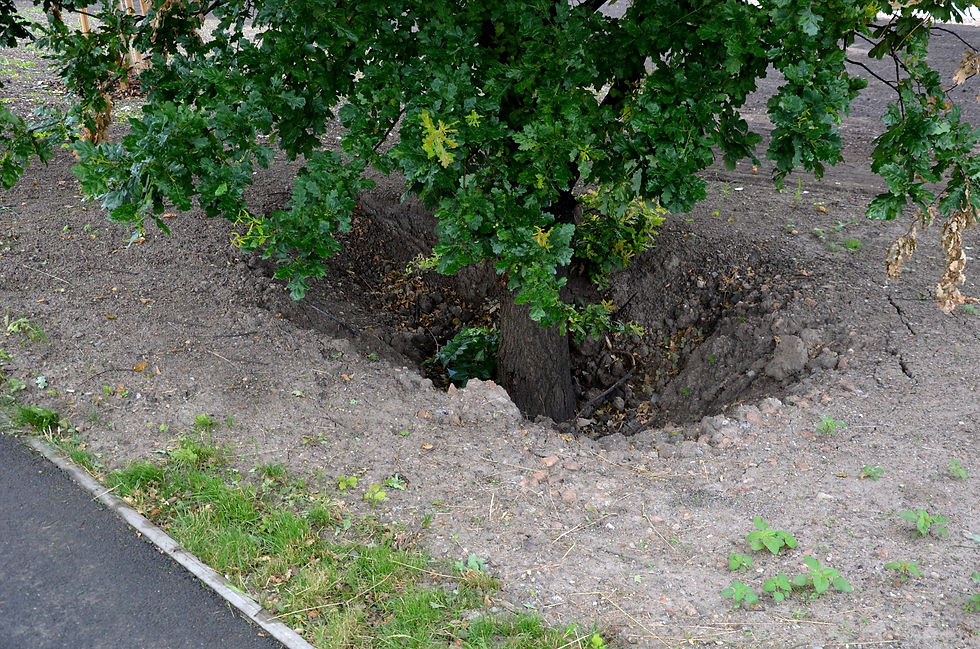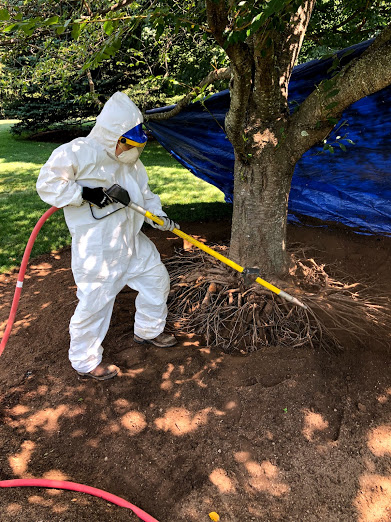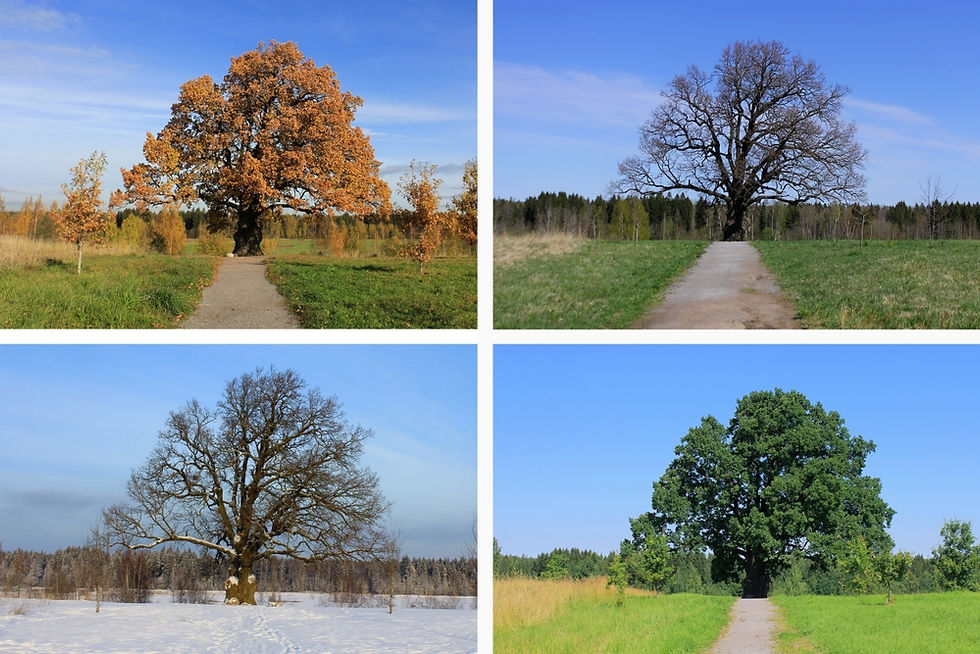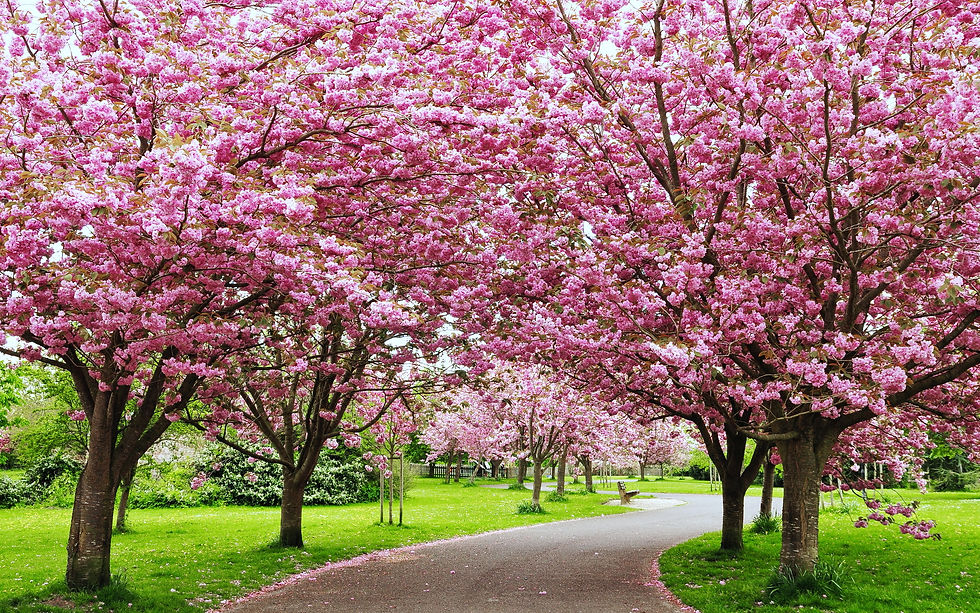The Silent Struggle: Uncovering the Hidden Impact of Construction and Grade Changes on Tree Health
- Oscar Melchor
- Jan 16, 2025
- 4 min read
Trees play a crucial role in our environment, providing shade, improving air quality, and enhancing our urban landscapes. However, many trees face significant threats due to construction activities and soil grade changes. These issues often remain hidden until it becomes too late, leading to tree decline or even death. Understanding how construction and grade changes affect tree health is essential for protecting these valuable assets.
In this post, we will focus on how soil fills, paving, and girdling roots negatively impact trees. We will also cover how arborists diagnose these problems and suggest practical solutions to maintain tree health in urban settings.
The Impact of Soil Fills and Grade Changes
One of the biggest threats to trees in urban areas is soil fill. When topsoil is removed and replaced with fill soil, the environment for trees can change drastically. For example, when soil is packed around a tree's base, it can choke the roots, which prevent them from accessing essential air, water, and nutrients. This suffocation can cause trees to decline within a short period, with studies revealing that trees with over 12 inches of soil fill can experience a 40% reduction in root growth.
Additionally, grade changes disrupt natural drainage patterns. Poor drainage causes water to either pool around the tree or disperse too far away. Waterlogged soil can lead to conditions like root rot, which affects around 25% of urban trees, according to research. Being aware of these factors is vital in mitigating harm and promoting tree health.

Paving and Its Consequences
Paving is another common issue impacting urban trees. Large expanses of concrete, like those found in parking lots, sidewalks, and driveways, are impermeable surfaces that prevent water from reaching tree roots. A study indicates that trees surrounded by pavement can suffer a 30% reduction in water access, leading to significant drought stress.
Moreover, paving creates soil compaction around tree roots. This makes it harder for trees to grow healthy root systems. When confined by hard surfaces, roots may start to grow upward, resulting in girdling roots. These roots wrap tightly around the trunk, which can choke the tree. Over time, this can lead to symptoms like wilting leaves, stunted growth, and ultimately tree death.

Injury by Girdling Roots
Girdling roots occur when roots grow around the base of a tree or spread horizontally near the surface. This can happen when trees are planted too deeply or when the surrounding space is too limited. These coiling roots can constrict the trunk and impede the flow of nutrients and water.
If left unaddressed, trees may show signs of stress, such as yellowing leaves and stunted growth. This gradual decline can culminate in severe health issues. For example, trees with girdling roots are more than 50% likely to decline in health over a few years if no intervention occurs.
Arborist Diagnosis: Uncovering the Issues
Arborists are essential in identifying tree health issues related to construction impacts. Their expertise allows them to analyze roots, soil conditions, and the overall health of trees using different diagnostic tools.
A common method is a visual inspection, where signs of distress, such as irregular growth patterns or leaf discoloration, are noted. For more serious cases, arborists may conduct soil tests to evaluate compaction levels and drainage. Advanced methods, like root excavation, provide insight into deeper problems affecting trees. By diagnosing these very issues early, arborists can create effective plans to improve tree health, ensuring their survival in altered environments.

Prevention and Care
To prevent tree damage caused by construction and grade changes, collaboration among developers, urban planners, and arborists is crucial. Thoughtful planning during construction can protect existing trees and their critical root zones.
Some practical steps include:
Tree Protection Zones: Create protected areas around trees to minimize disturbances to their root systems during construction.
Proper Drainage Design: Design drainage systems to direct moisture to tree root zones, ensuring trees receive adequate water.
Alternative Surface Solutions: Use permeable materials for paving to promote better water infiltration and reduce stress on tree roots.
By raising awareness about these essential practices, communities can foster support for protecting trees.
Protecting Our Urban Treasures
The quiet battle that trees face against construction-related issues deserves more attention. By understanding how activities such as soil fills and paving impact tree health, we can make better decisions that benefit both the trees and our urban environment.
With the guidance from arborists and a coordinated approach among communities and developers, we can work toward preserving our trees. By being proactive and informed, we can ensure that these vital components of our ecosystems thrive for future generations.






Comments